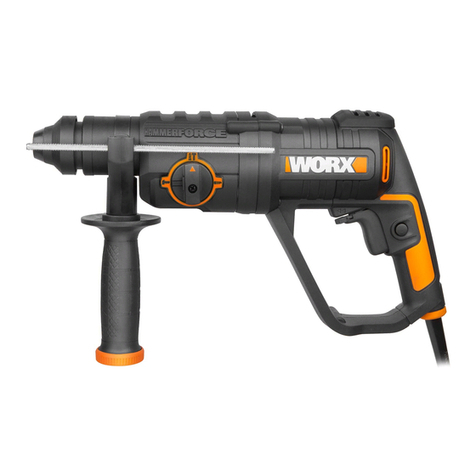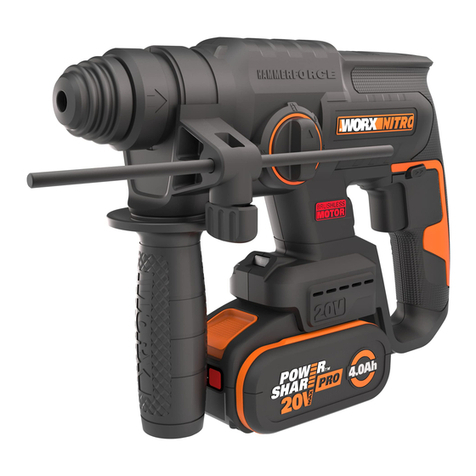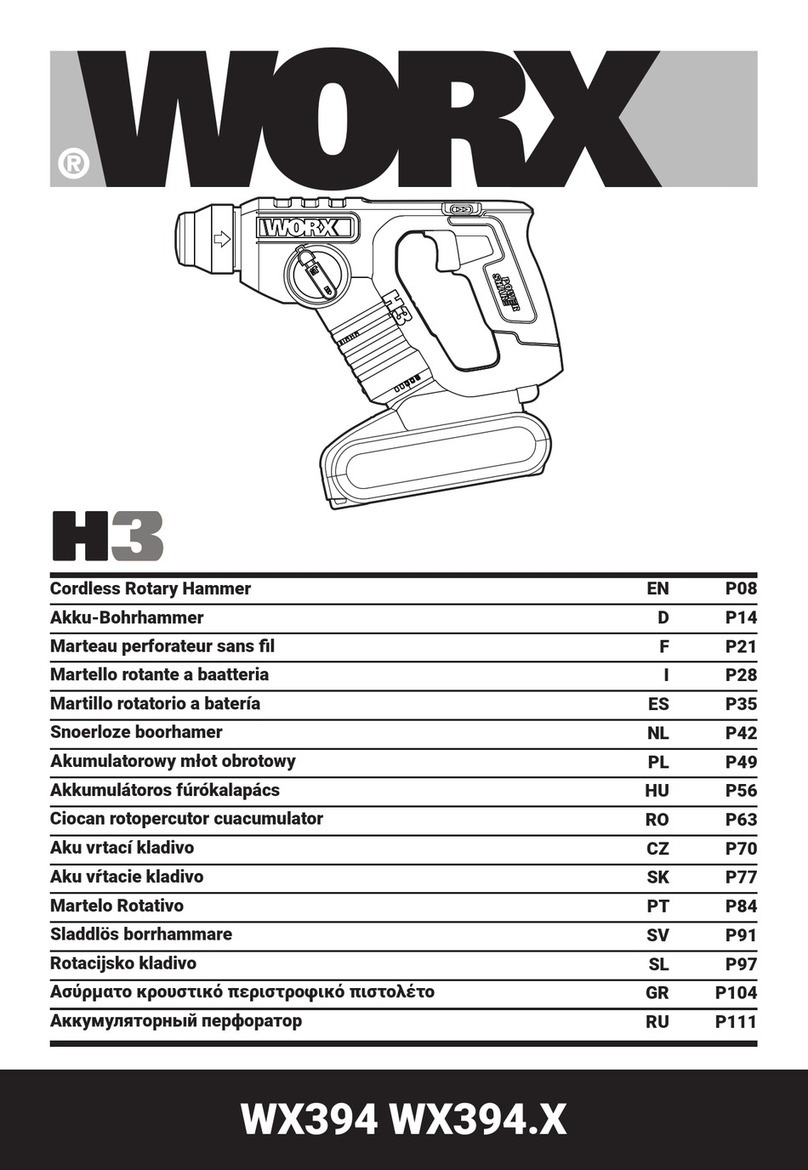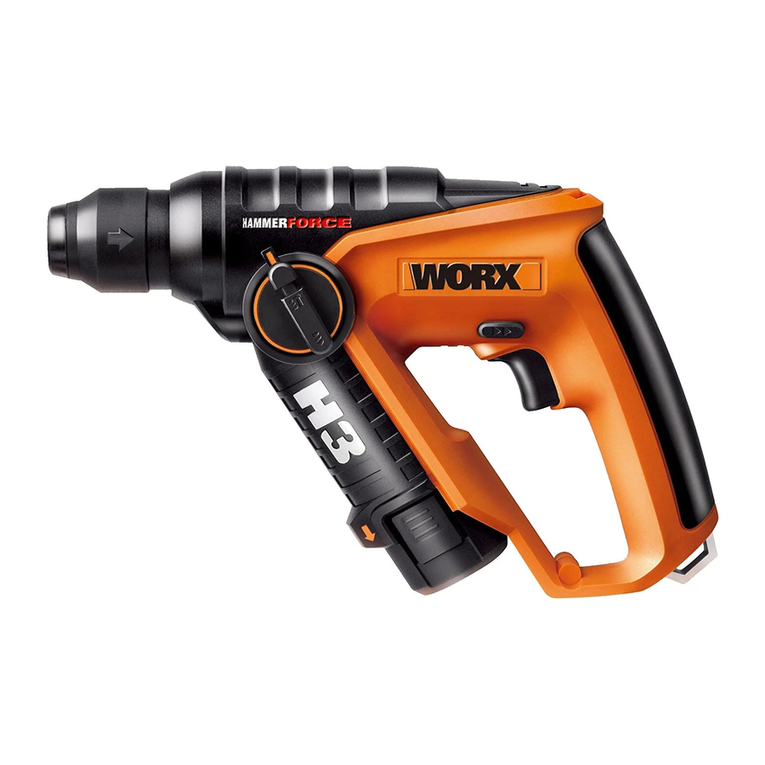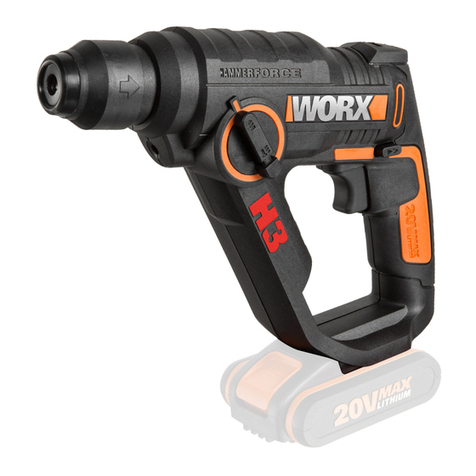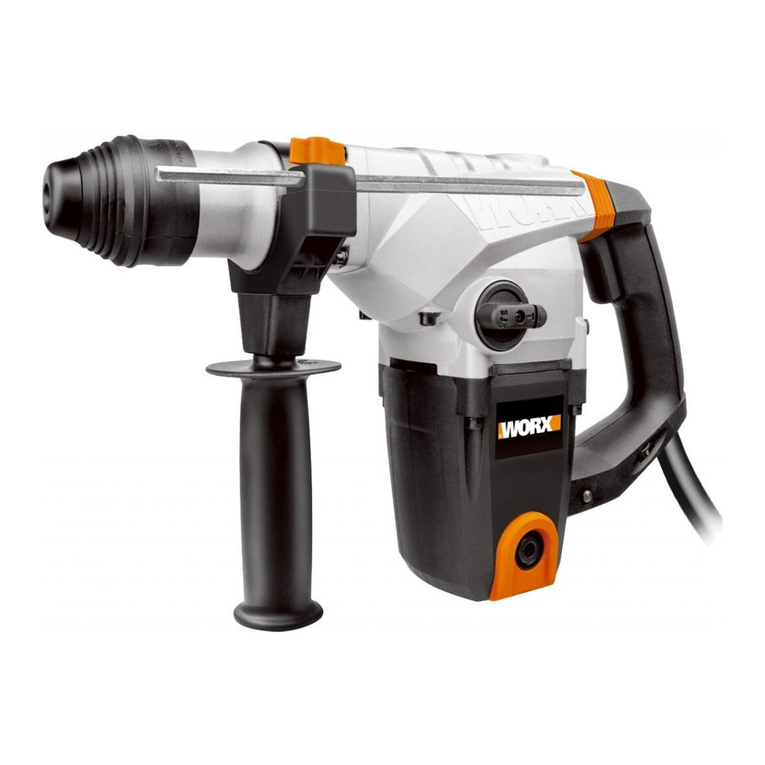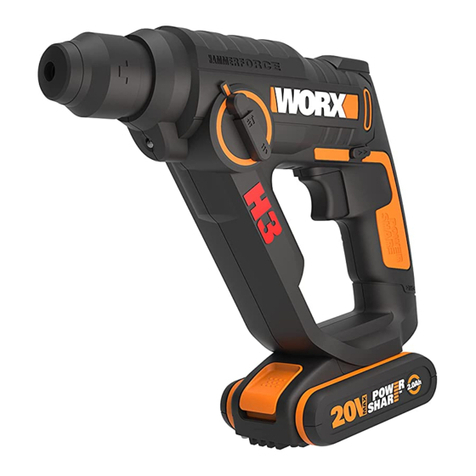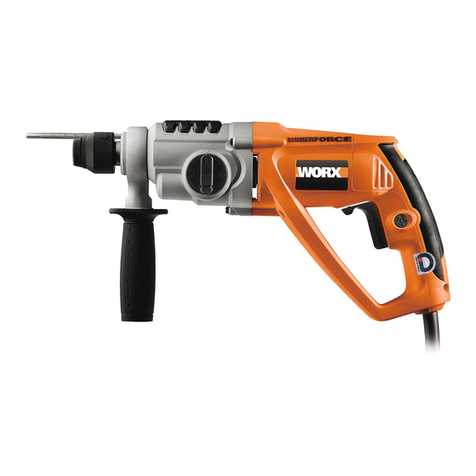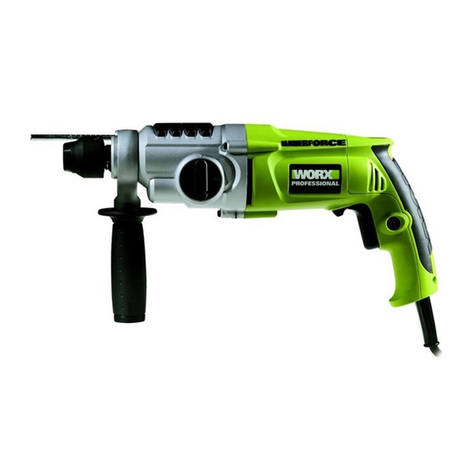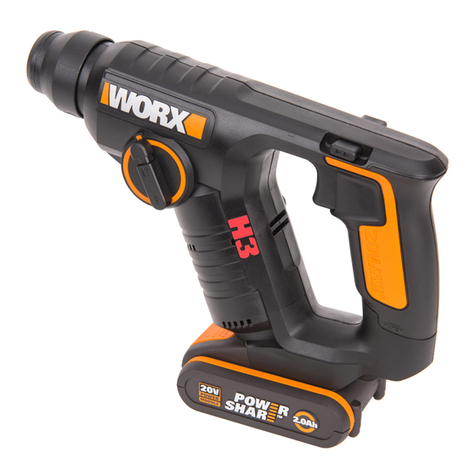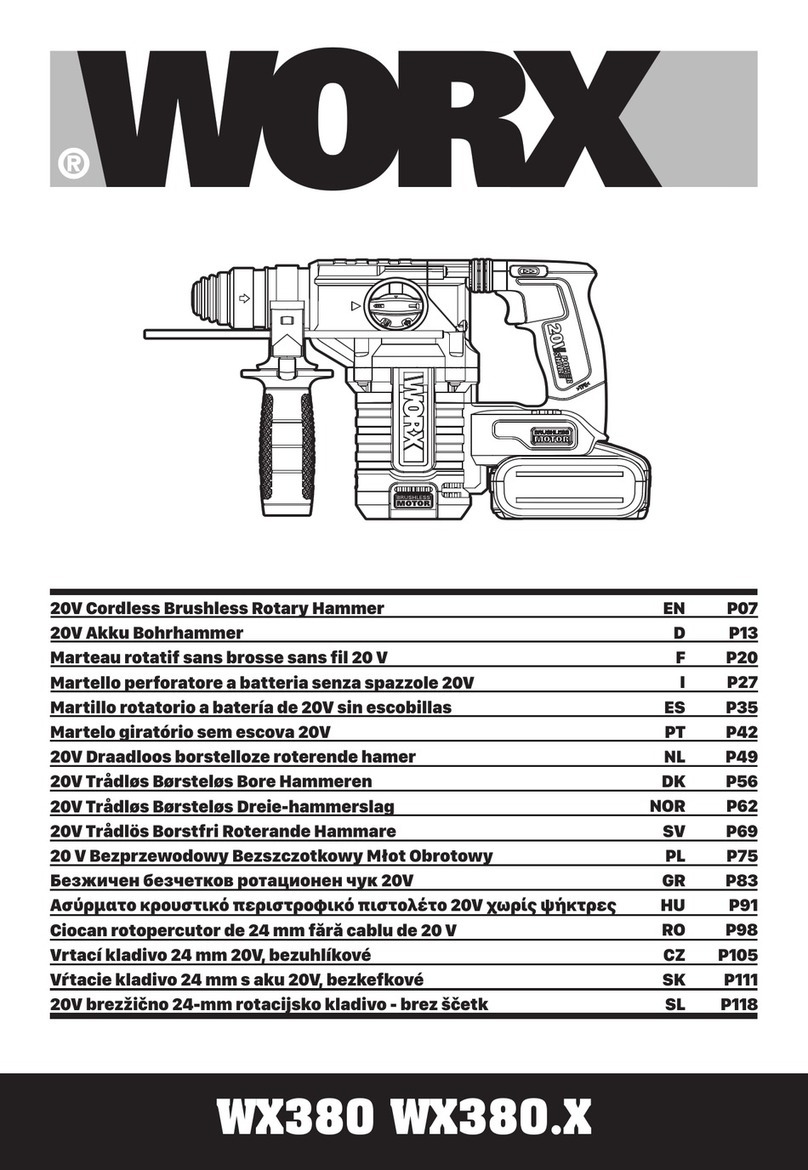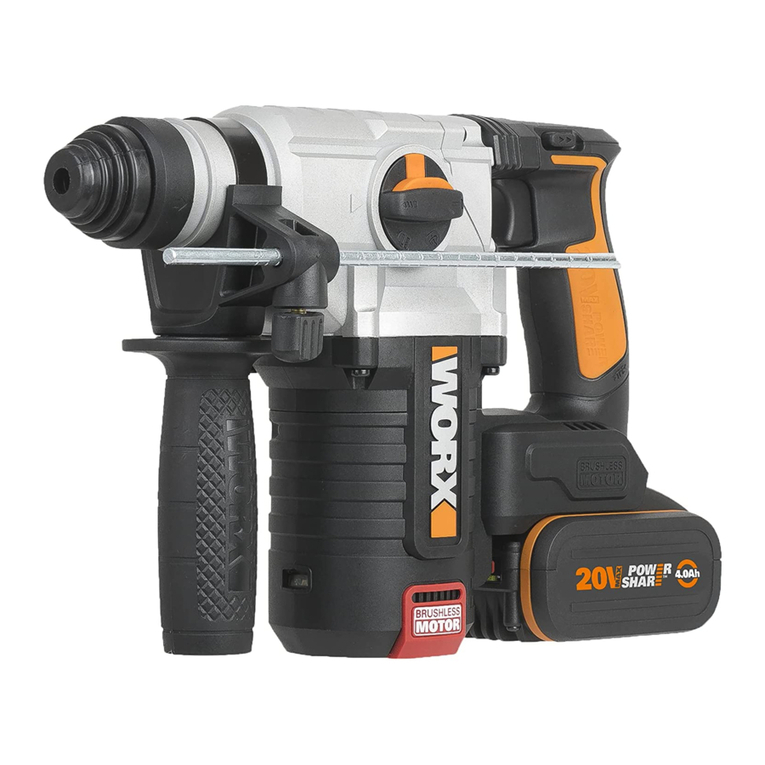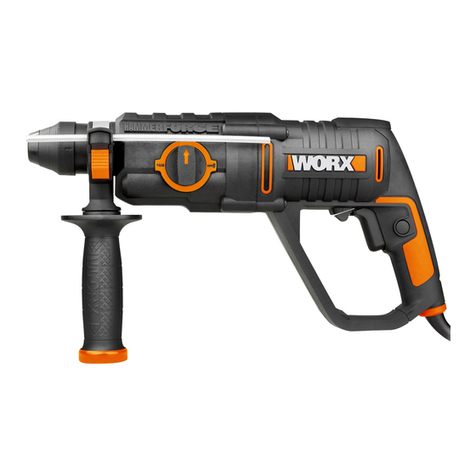7
1
2
Operating instructions
Note: Before using the tool, read the instruction book carefully.
INTENDED USE
The machine is intended for hammer drilling in concrete, brick and
stone as well as for light chiseling work. It is also suitable for drilling
without impact in wood, metal, ceramic and plastic.
INSERTING/REPLACING THE DRILL CHUCK (See Fig. A1)
• Inserting the drill chuck
To work with tools without SDS-plus (e.g., drills with cylindrical
shafts), a suitable drill chuck must be used(Not supplied). Insert the
adapter (11) of the drill chuck (10) with a twisting motion into the
SDS-plus chuck (9) until it can be heard to lock. The adapter locks
itself. Check the locking by pulling on the drill chuck.
• Removing the drill chuck
To remove the drill chuck (10), pull the locking sleeve (7) to the rear,
hold in this position and remove the drill chuck from the tool holder.
INSERTING AND REMOVING DRILL BIT IN SDS
Take care that the dust protection cap (8) is not damaged when
changing tools.
•Inserting
Clean and lightly oil the bit before inserting. Insert the dust-free bit
into the bit holder with a twisting motion until it latches.
The bit locks itself. Check the locking by pulling on the tool.
•Removing
Retract back the bit holder locking sleeve (7) and pull out the bit.
Warning: Your new WORX Rotary Hammer Drill generates
powerful forces to get your job done quickly and effectively. These
forces may cause inferior quality SDS bits to break and jam in the
chuck,We therefore recommend that only high quality SDS bits be
used with this tool.
MOUNTING OF BIT IN KEYED CHUCK
Warning: Do not use tools without SDS-plus for hammer
drilling or chiseling!
Before mounting the drill bit, attaching the 13 mm keyed chuck,insert
bit between the chuck jaws as far as it will go. Ensure drill bit is in the
center of the chuck jaws. Using the chuck key, there are three holes
in which the chuck key should be inserted. Tighten them equally in
turn at each of the three holes, not just at one hole. Your drill bit is
now locked in the chuck. The bit can be removed by reversing the
above procedure (See Fig. A2).
ON/OFF SWITCH WITH VARIABLE SPEED CONTROL
Depress to start and release to stop your tool. This tool has a variable
speed switch (1) that delivers higher speeds with increased trigger
pressure - speed is controlled by varying the pressure applied to the
switch (See Fig. B)
SWITCH LOCK-ON BUTTON
Depress the on/off switch (1) then the lock on button (2) (See Fig. B);
release the on/off switch first and the lock-on button second. Your
switch is now locked on for continuous use. To switch off your tool
just depress and release the on/off switch.
AUXILIARY HANDLE
Slide the handle onto the hammer and rotate to the desired working
3
4
5
6
